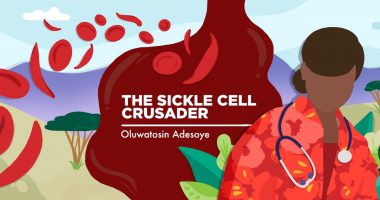First SCD Patient Treated With CTX001 Remains VOCs-free After 9 Months, Trial Results Show

The first patient with severe sickle cell disease (SCD) who received a single infusion of CTX001, an experimental gene-editing cell therapy, remains free of vaso-occlusive crises (VOCs) nine months after treatment, a Phase 1/2 clinical trial shows.
Findings from the trial, “(S280) Initial Safety and Efficacy Results With a Single Dose of Autologous CRISPR-CAS9 Modified CD34+ Hematopoietic Stem and Progenitor Cells in Transfusion-dependent B-thalassemia and Sickle Cell disease,” were presented at the recent European Hematology Association (EHA) Virtual Congress and detailed in a press release.
CTX001 is being developed by CRISPR Therapeutics and Vertex Pharmaceuticals for the treatment of blood disorders caused by defects in hemoglobin — the protein carrying oxygen in red blood cells — including SCD and transfusion-dependent beta thalassemia (TDT).
The therapy uses the CRISPR-Cas9 gene-editing tool to modify patients’ blood cell progenitors (hematopoietic stem cells) so that they produce high levels of fetal hemoglobin in red blood cells. Once the process is complete, cells are re-introduced back into patients.
By increasing the levels of fetal hemoglobin — a form of hemoglobin found in newborns that transports oxygen more efficiently than the adult counterpart — CTX001 is expected to lower the frequency of VOCs in SCD patients and the constant need for blood transfusions in people with TDT.
The Phase 1/2 CLIMB-SCD-121 trial (NCT03745287) is currently evaluating the safety and effectiveness of a single infusion of CTX001 in adults up to age 35 with severe SCD.
Two patients have been dosed in the study so far, and both have had a successful engraftment, meaning the transplanted cells survived and expanded. Patient recruitment is ongoing at several sites across North America and Europe. Up to 45 patients will be included and followed-up for nearly two years. All will have the opportunity to join a long-term follow-up study.
Preliminary data from the study showed CTX001 safely increased the levels of fetal hemoglobin in the first patient dosed, effectively preventing the occurrence of VOCs. Before enrolling in the study, this participant — a woman age 33 when joining the trial — had on average seven VOCs and required five blood transfusions each year.
New data from CLIMB-SCD-121 showed that the woman remains free of VOCs nine months after receiving CTX001. In addition, she did not require any blood transfusions following treatment.
CTX001 also increased her total hemoglobin levels from 7.2 g/dL at the study’s start to 11.8 g/dL at the nine-month follow-up.
Treatment increased the percentage of fetal hemoglobin to 46.1%, as well as the percentage of F-cells — red blood cells producing fetal hemoglobin — to 99.7%.
After receiving an infusion of CTX001, the patient experienced three serious adverse events (side effects) — sepsis alongside neutropenia (low white blood cell counts), cholelithiasis, or gallstones, and abdominal pain — all deemed unrelated to treatment and subsequently resolved.
In addition to data from CLIMB-SCD-121, the companies presented updated findings from the Phase 1/2 CLIMB-Thal-111 trial (NCT03655678) that is assessing the safety and effectiveness of CTX001 in TDT patients. Patient recruitment is ongoing, and soon will be opened to children and adolescents 12 and older.
All five patients dosed so far have had a successful engraftment. The first two patients dosed did not require blood transfusions during follow-up — more than 15 months in one participant and five months ago in the other. Also, both patients experienced increases in total hemoglobin levels, and percentage of fetal hemoglobin and F-cells.
“With these new data, we are beginning to see early evidence of the potential durability of benefit from treatment with CTX001, as well as consistency of the therapeutic effect across patients,” said Samarth Kulkarni, PhD, CEO of CRISPR Therapeutics. “These highly encouraging early data represent one more step toward delivering on the promise and potential of CRISPR/Cas9 therapies as a new class of potentially transformative medicines to treat serious diseases.”
Added Reshma Kewalramani, MD, CEO and president of Vertex: “The results presented at this medical conference add to results previously shared demonstrating that CRISPR/Cas9 gene editing has the potential to be a curative therapy for severe genetic diseases like sickle cell and beta thalassemia.”
In March, conditioning for stem cell transplantation and CTX001 dosing were temporarily suspended in both trials for safety reasons due to the COVID-19 pandemic. Vertex and CRISPR are now re-initiating dosing in the two studies at specific clinical sites. The companies anticipate updated results later this year.






